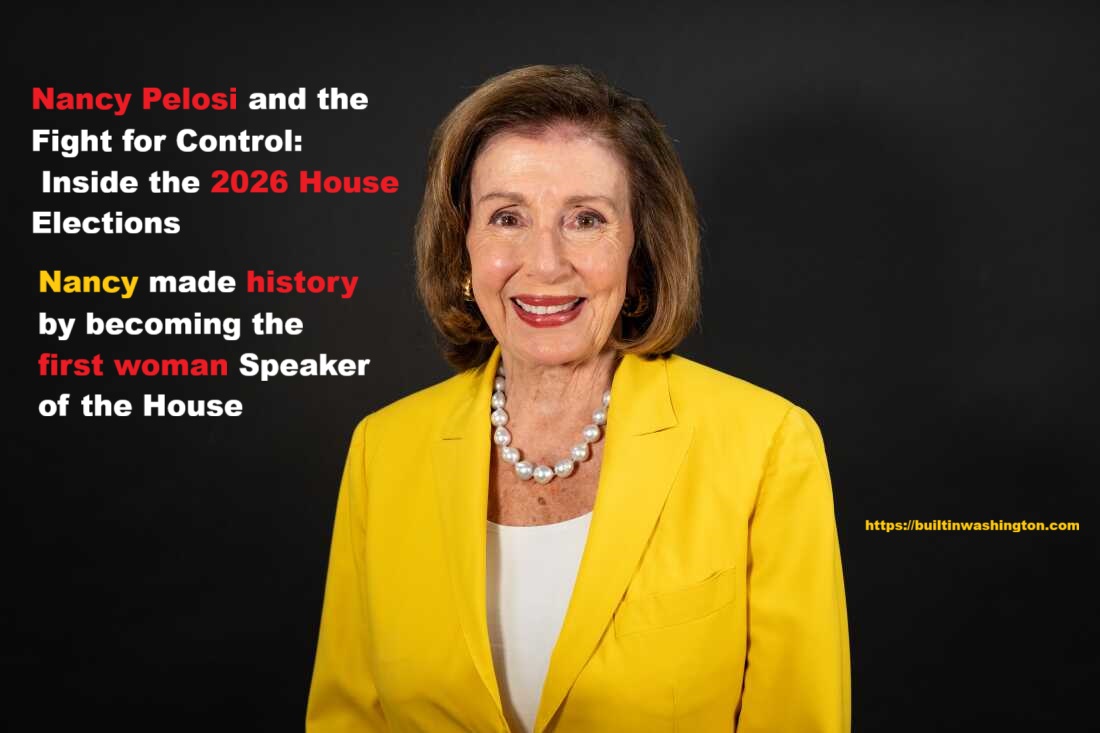Nancy Pelosi and the Fight for Control: Inside the 2026 House Elections
Who Is Nancy Pelosi
Nancy Pelosi is a highly influential American politician who has served as a member of the U.S. House of Representatives since 1987, representing San Francisco, California. She made history by becoming the first woman Speaker of the House, holding that position from 2007 to 2011 and again from 2019. Pelosi is known for her leadership in passing major laws like the Affordable Care Act and for being a powerful voice for women’s rights and progressive policies. Throughout her career, she has played a key role in shaping American politics and Democratic Party strategy.
The 2026 House elections are set to be one of the most intense political battles in recent memory. With Nancy Pelosi playing a key role and California’s Proposition 50 in the spotlight, both parties are gearing up for a fierce fight. These elections will shape the future of American politics in significant ways.
The 2026 House Elections: Key Issues at Play
The 2026 midterm elections are shaping up as a fierce battle for control of the House of Representatives. Key issues dominating the landscape include redistricting, voter turnout, and the Democratic Party’s effort to reclaim a majority. Furthermore, the political climate remains charged by the aftereffects of the 2024 elections and the influence of former President Donald Trump. This contest will significantly impact legislative agendas and leadership for the next Congress. Important to note, California’s Proposition 50 is central to Democrats’ hopes to redraw favorable districts, counteracting Republican-led efforts in states like Texas. The stakes could not be higher as both parties strategize to secure their influence over policymaking for at least the next two years.
Overview of the 2026 Midterm Elections
Midterms traditionally serve as a referendum on the party in power, making 2026 crucial for both parties. After regaining some ground in 2024, Democrats face the challenge of maintaining momentum amidst rising opposition and shifting demographics. The election will determine control of all 435 House seats, with about 35 seats currently considered competitive. Party dynamics include fresh challengers, incumbents vying to hold their ground, and the impact of national issues like inflation, healthcare, and immigration. Voter engagement efforts are intensifying as turnout often dips in midterms, influencing results dramatically. Finally, political observers are closely watching fundraising efforts, which have already surpassed several million dollars for key races nationwide.
Nancy Pelosi’s Current Political Focus and Moves
Despite speculation about her future, Nancy Pelosi remains focused on securing a Democratic victory in 2026. Her top priority is winning California’s Proposition 50, which would grant the state legislature more control over congressional redistricting, potentially increasing Democratic seats. Pelosi has emphasized that her role concentrates on “winning the House for the Democrats,” signaling a continued commitment despite talk of retirement. She faces primary challenges yet holds significant influence within the party. Pelosi’s deep experience and network provide strategic advantages, particularly in rallying grassroots support and fundraising, which are essential for the tightly contested midterms. Her decision on running again is pending, adding intrigue to the political landscape.
The Impact of California’s Proposition 50
California’s Proposition 50 stands as a critical factor in the 2026 elections. If passed, it would remove redistricting power from the independent commission and place it under the state legislature, dominated by Democrats. The goal is to redraw districts that can help Democrats win more House seats, offsetting Republican gerrymandering in other states. This proposition has received strong backing from Pelosi and Governor Gavin Newsom as a necessary step to balance political power. However, opposition voices, including some Republicans and moderate Democrats, argue it could undermine fair representation. With California controlling over 50 House seats, the results of Prop 50 could shape the balance of power in Congress.
Challenges Facing the Democratic Party in 2026
The Democratic Party encounters multiple challenges heading into the 2026 elections. These include primary contests against established incumbents like Pelosi, shifting voter demographics, and maintaining unity amid ideological divides. They must also combat negative narratives and capitalize on policy successes to motivate their base. Furthermore, Republicans are aggressively targeting vulnerable seats and capitalizing on redistricting gains. Keeping turnout high, especially in swing districts, remains a key hurdle. Strategic messaging about the economy, healthcare, and social justice will be vital. With more than 40 seats considered toss-ups, Democrats need coordinated efforts on the ground and ample funding to sustain competitiveness.
Potential Outcomes for Democrats and Republicans
The 2026 House elections could tip either way, with both parties having pathways to victory. Democrats hope to leverage Prop 50 and Pelosi’s leadership to regain a comfortable majority, enabling them to advance their legislative agenda. Republicans seek to expand their hold, using redistricting advantages in states like Texas and increasing appeal to suburban voters. Analysts predict close races in roughly 35 districts, making grassroots mobilization decisive. Key numbers to watch include whether Democrats can gain at least 17 seats to reclaim control. The outcome depends heavily on voter turnout, candidate recruitment, and campaign strategy in battleground districts nationwide.
What the 2026 Elections Could Mean for Future Leadership
These elections will not only determine the House majority but also shape the party leadership for years to come. Pelosi’s anticipated retirement, pending the Prop 50 vote, would create a historic vacancy in Democratic leadership. Potential successors have been preparing for this transition, meaning the 2026 midterms impact who will guide the party forward. Leadership choices will influence legislative priorities and party unity. For Republicans, gains could empower more conservative factions or moderate voices depending on outcomes. The election’s results will define Washington’s political direction through 2028, framing national debates and policy responses to urgent issues.
Conclusion: Pelosi’s Legacy and the Road Ahead
Nancy Pelosi’s career has been marked by historic leadership as the first female Speaker of the House and her role in landmark legislation. Her efforts in the 2026 elections, especially around Proposition 50, underscore her lasting influence on American politics. Whether she runs again or not, Pelosi’s legacy includes navigating complex challenges to protect and expand Democratic power. The 2026 elections represent a pivotal moment, setting the stage for new leadership and the evolving priorities of the Democratic Party. Ultimately, the outcome will reflect the balance of political power and America’s future direction, as voters decide who will steer the nation’s legislative course.
For more on the top Greek life groups, check out the Best Sororities at University of Washington.
For additional informative content, explore Built In Washington.















